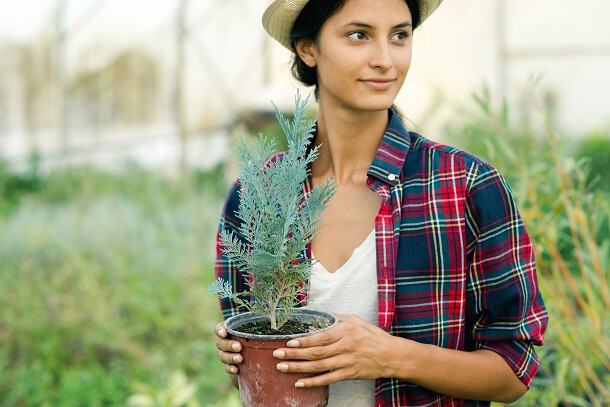Give perennials, bulbs, trees, and shrubs a head start by planting them in the fall and they'll come out bigger and better in the spring

Spring may be known as the growing season but fall planting can lay the groundwork for some glorious plants and flowers later on, too. For much of the country, autumn offers excellent gardening conditions with moderate temperatures that keep soil warm and a fair amount of rain. With that in mind, don't put away your gardening tools when summer comes to an end. It's time to think of the fall not as the end of the gardening season, but the beginning.
Why Fall Planting Is Totally Worth It
The biggest perk is that the plants will focus all their energy on establishing strong roots in the still-warm soil. That means you'll have bigger, fuller plants in the spring. "Anytime there's a strong root system, it sizes up"—grows at a better rate —"and does well the next year," says Tom Estabrook, vice president of Estabrook's, a garden center and nursery in Yarmouth and Kennebunk, Maine. "When you create a great soil environment, plants are better able to ward off insects and disease," he says. Other benefits to planting in the fall: There's less work to maintain your garden than there is in the spring. Thanks too cooler temperatures in autumn, you'll water the garden less since it'll take longer for the soil to get dry. Many garden centers offer deep discounts on bulbs, perennials, trees, and shrubs in the fall, so go shopping and help them get rid of their summer inventory.
When to Plant
Depending on where you live, you can plant in September, October, or even November as long as it's about six weeks before the first frost in your area. To find the approximate frost date near you, consult this chart from American Meadows, an online gardening retailer.
What to Plant
Fall is the time to plant bulbs such as daffodils and fritillaria, trees, shrubs, and bulbs like garden phlox and dianthus. But for plants to do their best, choose those in your plant hardiness zone; to find yours, consult this United States Department of Agriculture map. Every plant sold at nurseries and garden centers will be labeled with the numbered zones they'll thrive in.
How to Plant
If you have an existing garden, get it ready for new seeds by cleaning up the planting area. Pull any leftover plant materials (grass, leaves, stalks, roots) and weeds out of the ground. Depending on how large the space, turn the soil with a shovel or rototiller to remove the old growth.
Why You Shouldn't Fertilize
Sometimes bigger isn't better. "You want the plants to stop growing and harden up for the winter," says Estabrook, "so around August 15 you should pull back on feeding." Because of consistently warmer autumns the last few years, he says plants have been growing later and later into the season. "When there's late growth, that's when plants can get die-back [fungal disease]." Also, plants on a growth spurt will push their new two to three inches of growth and then they get destroyed by the first hit of cold weather, killing those stems.